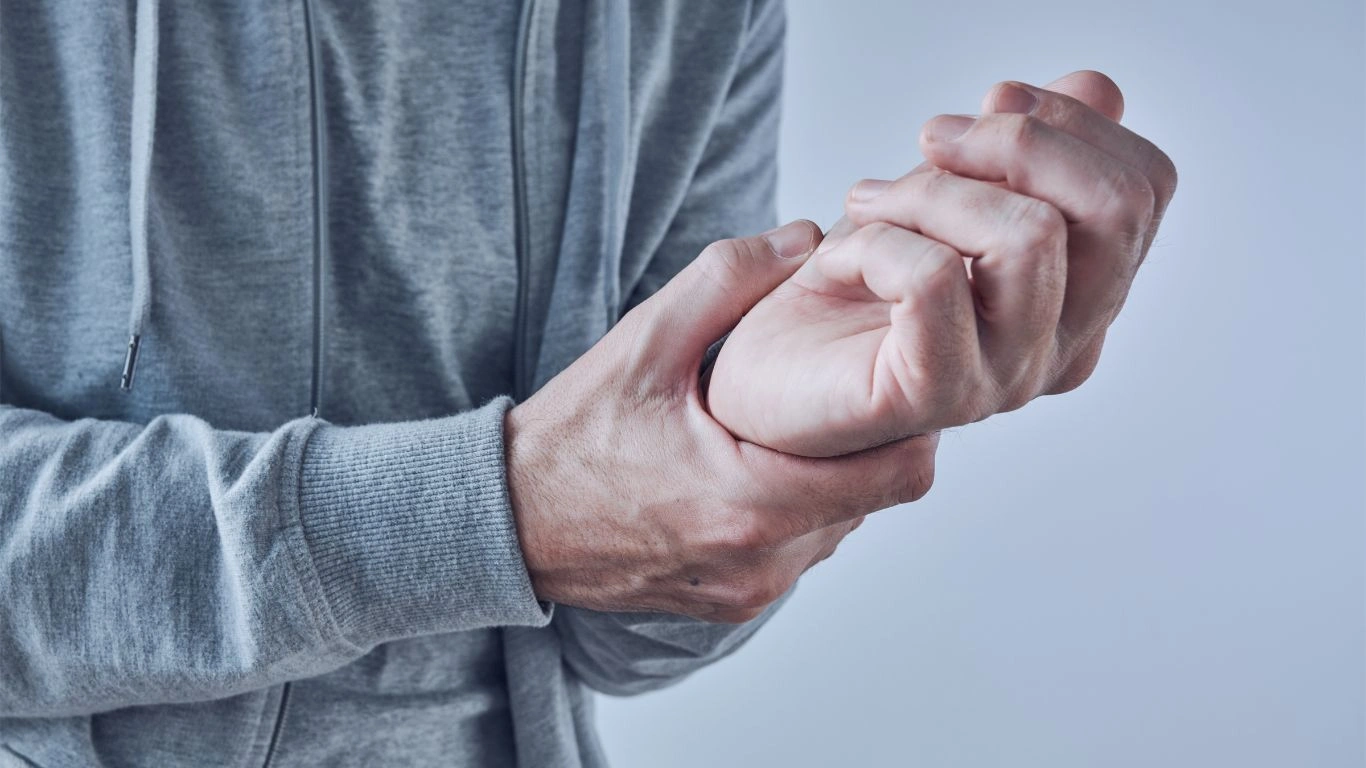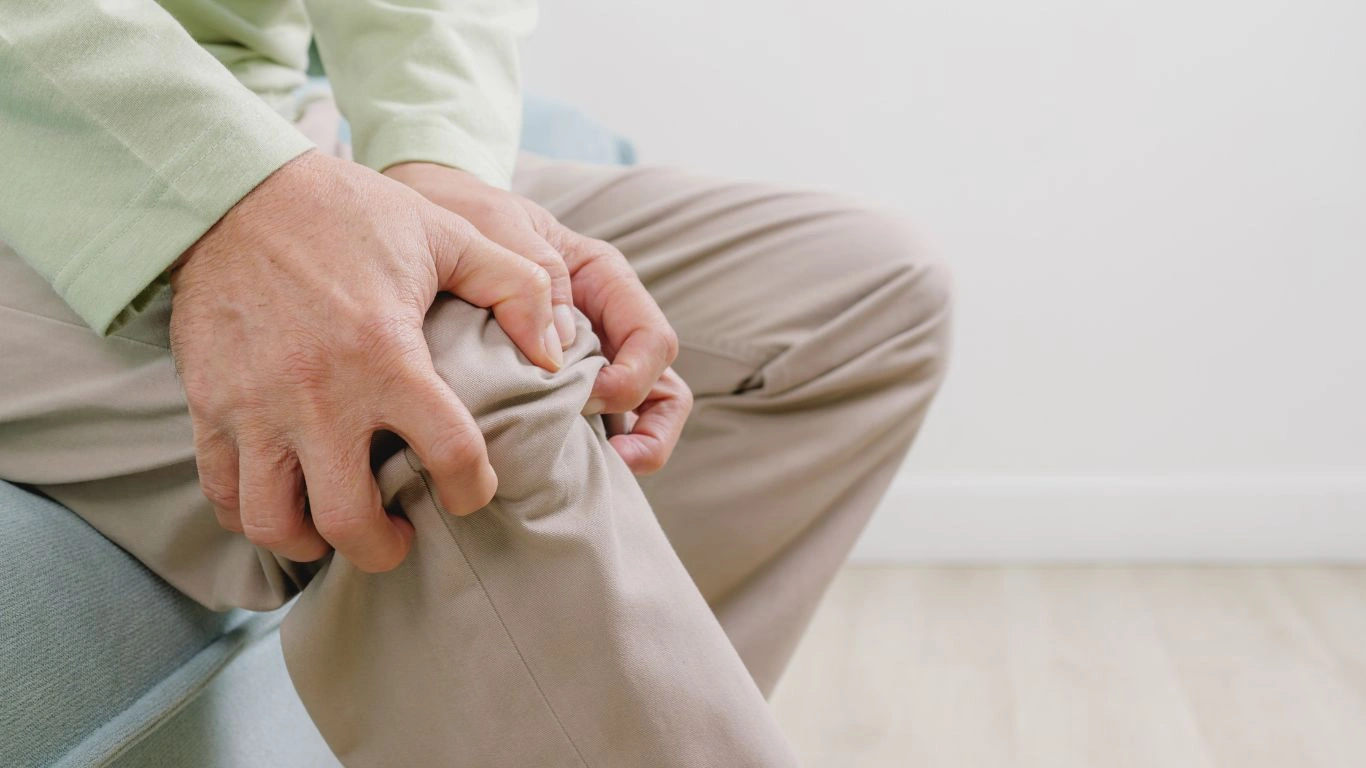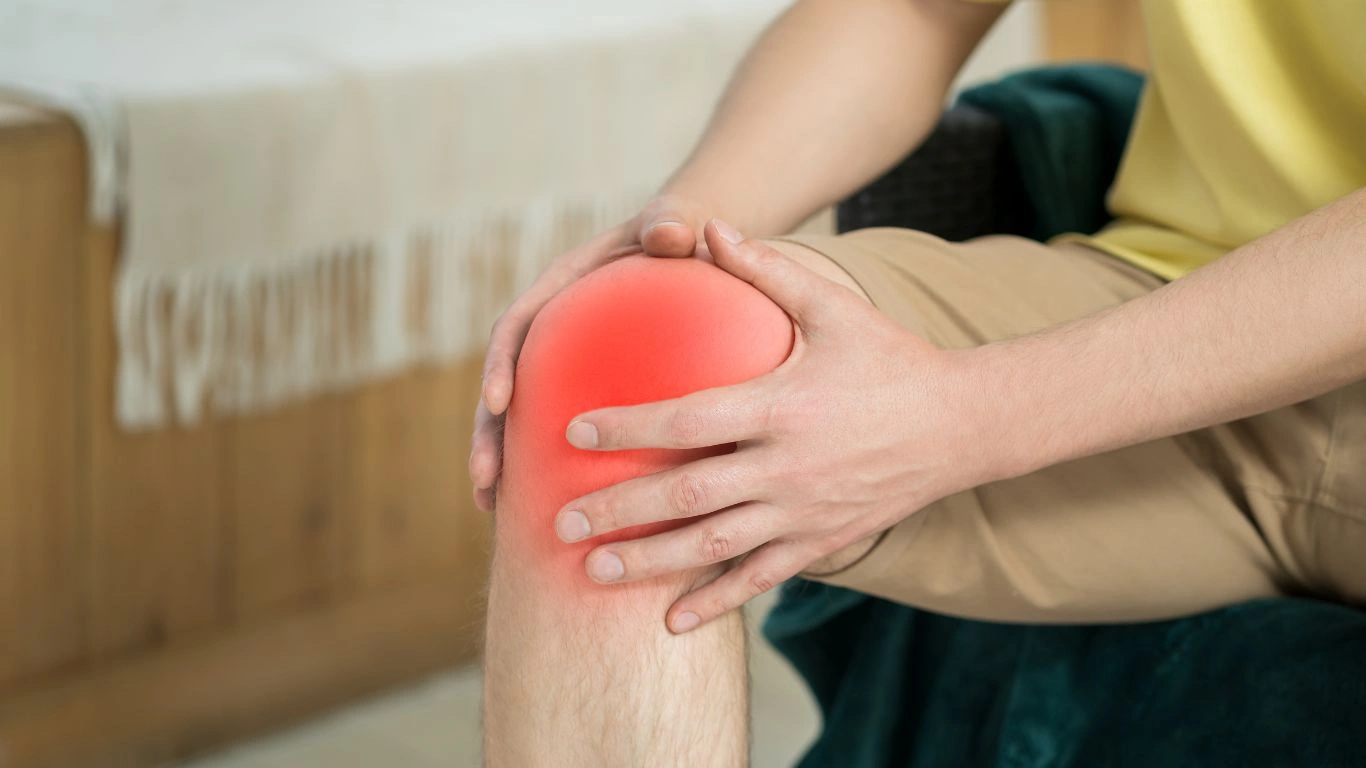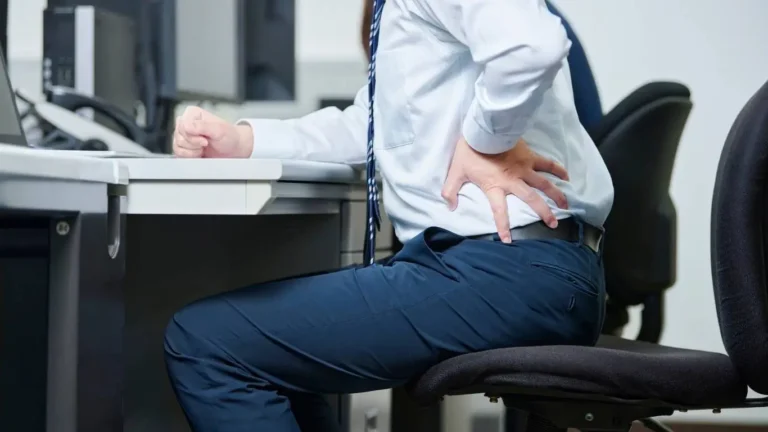Can RA Cause Weak Grip? Simple Ways to Spot & Manage It
Can RA cause weak grip? If you’ve ever found yourself struggling to open a jar, twist a doorknob, or even hold a pen, you’re not alone. As a Rheumatology nurse practitioner, I’ve had countless patients walk into my clinic frustrated by a loss of grip strength—and more often than not, rheumatoid arthritis (RA) is the culprit. This isn’t just an inconvenience; it’s a daily reality for many folks living with RA, and it often sneaks up on them before the diagnosis is even made. In this post, we’ll explore why grip weakness happens, what’s really going on inside those joints, and how to manage it—because yes, it can get better.
Understanding Rheumatoid Arthritis and Hand Function

Rheumatoid arthritis is more than just joint pain—it’s a full-body autoimmune condition that targets the lining of your joints. One of the most common areas affected? The small joints in your hands and wrists. This is where a lot of my patients first notice changes, especially when their grip starts to feel… off. Not necessarily painful at first—just weak or unreliable. One patient told me it felt like she was “losing her handshake strength,” which stuck with me.
Why Does Grip Strength Go First?
It comes down to the inflammation RA causes in the synovium (that’s the lining of your joints). When that area swells, it presses on nearby tendons and nerves, messes with joint mechanics, and sometimes even causes permanent joint damage. All of this together can make it hard to squeeze, pinch, or even hold light objects like a coffee cup or your phone.
- Swelling and stiffness: Makes it hard for fingers to flex fully.
- Joint damage: Erodes the cartilage, making movement painful and unstable.
- Tendon irritation: Inflamed tendons don’t glide smoothly, affecting grip.
Another lesser-known factor? Fatigue. RA can make you feel exhausted, and that includes your muscles. Even when there’s no visible swelling, the hand and forearm muscles can tire quickly during daily tasks. I’ve seen patients feel discouraged because they think they’re just “out of shape”—when in fact, it’s the disease silently chipping away at their strength.
Can RA Cause Weak Grip? Absolutely—Here’s How

This is where things get a bit more technical, but bear with me. RA tends to affect certain hand joints more aggressively—especially the metacarpophalangeal (MCP) joints (those big knuckles you see when you make a fist) and the proximal interphalangeal (PIP) joints (the middle knuckles). When these joints become inflamed, grip strength drops significantly because those are your key power points for holding and squeezing things.
- MCP Joint inflammation: Makes forming a fist painful and weak.
- Deformities: RA can cause fingers to drift sideways (ulnar deviation), making grip awkward.
- Synovial cysts: These fluid-filled sacs can pop up near tendons and weaken their function.
I remember one gentleman—mid-50s, lifelong guitar player—who came in devastated because he could no longer hold down the strings. His RA wasn’t just impacting his health; it was chipping away at his identity. That’s when it hit me how personal grip strength can be—it’s not just physical, it’s emotional too.
Signs You Shouldn’t Ignore

If you’re noticing a weak grip and suspect RA might be involved, here are a few signs to watch for. Trust me, early detection can make all the difference:
- Morning stiffness in your hands that lasts more than an hour
- Swelling or tenderness in your knuckles or wrists
- A feeling like your hands aren’t “listening” when you try to grab or lift things
- Difficulty with tasks like turning keys, holding utensils, or writing
In my clinical experience, a lot of people brush off these early signs. They’ll say, “I probably just slept on it funny” or “Maybe I’m just getting older.” But when I hear those kinds of comments along with weak grip complaints, my radar goes up immediately. It’s always better to get checked early rather than wait until joint damage sets in.
How Weak Grip from RA Affects Daily Life

It’s easy to underestimate just how much we rely on our hands until they don’t work the way they used to. I’ve had patients in tears over not being able to zip up their coat or pour coffee without spilling it. These aren’t just minor inconveniences—they chip away at independence and confidence. When grip strength is compromised by RA, even the smallest daily routines start to feel like obstacles.
I remember working with a young mom who told me she dreaded picking up her toddler because she was afraid her hands would “give out.” She felt guilty and scared—not to mention frustrated. That’s the emotional toll RA can take when weak grip becomes a part of your reality.
Tasks That Become Challenging with Grip Weakness
- Opening jars, bottles, or medication containers
- Turning doorknobs or keys
- Brushing teeth or styling hair
- Cooking and chopping ingredients
- Using tools, phones, or remote controls
When these challenges add up, they can affect your social life, your work performance, and your overall mental well-being. Many of my patients start to withdraw or avoid activities they used to love, just to avoid the embarrassment or pain. It doesn’t have to be this way—there are options.
Managing Weak Grip in RA: What Actually Helps

Now let’s talk solutions. This is the part where I always remind my patients: you’re not powerless. Yes, RA is chronic. Yes, it affects grip strength. But there are evidence-based, practical strategies you can lean into. Managing RA-related grip weakness requires a combo of medication, movement, and a few lifestyle tweaks.
Medications That Reduce Inflammation
First off, we need to calm the inflammation. That’s where DMARDs (Disease-Modifying Anti-Rheumatic Drugs) and biologics come into play. If your grip is getting worse despite meds, it may be time to adjust your treatment plan. Don’t be afraid to speak up—it’s your quality of life on the line.
In my practice, I’ve seen people regain a surprising amount of function after just a few months on the right biologic. I once had a retired schoolteacher who couldn’t write in her journal anymore—after starting on a TNF inhibitor, she was back to scribbling away within eight weeks. It was like watching someone come back to life.
Hand Therapy and Targeted Exercises
Occupational therapy is a game-changer. Skilled therapists can guide you through gentle strengthening exercises and stretches specifically designed for RA-affected hands. Tools like therapy putty, resistance bands, and grip trainers can make a noticeable difference when used consistently.
- Finger extensions: Stretch and strengthen the back of the hand.
- Grip squeezes: Use a soft ball or therapy putty.
- Tendon glides: Promote flexibility and prevent stiffness.
I like to give my patients easy hand exercises to do during TV time. It’s low pressure and becomes part of a relaxing routine. Little by little, progress builds.
Assistive Devices That Make Life Easier

Don’t underestimate the power of gadgets. Seriously—there are some incredible tools out there that can save your hands a ton of strain. Over the years, I’ve compiled a short list of favorites based on what my patients actually use and love.
Top Recommended Aids for Weak Grip
- Jar openers: Silicone grip pads or electric jar openers can be lifesavers.
- Ergonomic utensils: Wider handles reduce pressure on joints.
- Button hooks: Help with dressing without fumbling.
- Pen grips: Make writing more comfortable and controlled.
- Electric can openers: Because struggling with a manual one just isn’t worth it.
One patient told me switching to adaptive kitchen tools brought back her love of cooking. She had given it up because she “couldn’t open half the ingredients.” Now, she’s back to making Sunday dinners for her grandkids—talk about a win.
Don’t Be Afraid to Ask for Help
This might sound cliché, but it’s true: asking for help is not a weakness. It’s part of managing a chronic illness wisely. Whether that’s getting a referral to a hand specialist or asking your partner to help with the pickle jar—these small steps add up to better days.
As a provider, my goal is always to empower patients. You deserve a care plan that helps you hold onto your independence and the activities you love—even if your grip strength isn’t what it used to be. RA might affect your hands, but it doesn’t have to take control of your life.
Long-Term Strategies for Managing Grip Weakness from RA

Alright, so we’ve talked about what causes weak grip in rheumatoid arthritis and how to manage the day-to-day challenges. Now let’s look at the bigger picture—because RA is a marathon, not a sprint. And if there’s one thing I’ve learned as a Rheumatology nurse practitioner, it’s that sustainable progress takes consistency, support, and a mindset shift. Grip strength may come and go with flares, but long-term strategies can help preserve it and even improve it over time.
Many of my patients ask, “Will I ever get my strength back?” And my answer? Yes—maybe not the exact same as before, but you can absolutely regain function, especially with a proactive plan. It starts with understanding that your hands need the same kind of care and attention as the rest of your body—sometimes even more.
Routine and Self-Monitoring Matter
One of the best things you can do is stay in tune with your body. Keep a simple journal (digital or old-school paper) to track flare-ups, hand pain, grip ability, and fatigue. Patterns will emerge, and that info is gold for your provider. It helps us make smarter decisions when it comes to medications or therapy tweaks.
- Note when tasks feel harder than usual.
- Track how long stiffness lasts in the morning.
- Record any new sensations—numbness, tingling, or sharp pains.
I had one patient discover that her grip issues worsened every time she had a poor night’s sleep. Once we addressed her sleep hygiene, her flares became less intense. That’s the kind of insight you can only get by paying close attention to your daily rhythm.
Nutrition and Supplements: Supporting Grip from the Inside Out

Let’s not underestimate what we put into our bodies. Inflammation doesn’t start and stop at the joints—it’s affected by everything from stress to diet. I’m not a dietitian, but I’ve worked closely with patients who’ve seen real improvement in their symptoms after making nutrition a priority.
Foods That Help (and Hurt)
While there’s no one-size-fits-all “RA diet,” certain anti-inflammatory foods may help reduce joint stiffness and boost muscle recovery, especially in the hands and forearms.
- Helpful: Fatty fish (like salmon), leafy greens, berries, turmeric, walnuts, olive oil
- Limit: Processed foods, excess sugar, fried foods, refined carbs
Supplements like omega-3s, vitamin D, and magnesium can also be helpful—but always check with your rheumatologist before adding anything new. I once had a patient with low vitamin D levels who noticed fewer flares after consistent supplementation. Coincidence? Maybe. But sometimes, the small things add up in a big way.
Mindset Shifts and Mental Health Support
Let’s be real: losing grip strength because of RA is more than just a physical issue—it’s emotional, too. Many of the people I care for feel embarrassed, defeated, or even angry when their hands won’t cooperate. That emotional stress can actually make symptoms worse if left unchecked.
I always encourage my patients to talk to someone—whether it’s a therapist, support group, or trusted friend. You’re not alone in this, and you’re not “weak” for needing support. If anything, it’s the strongest thing you can do.
Try These Coping Tips
- Practice mindfulness or guided meditation during flares
- Join a local or online RA support group
- Use journaling as a tool for emotional release
- Celebrate small wins—like opening a stubborn bottle cap!
One of my favorite moments as a nurse practitioner was when a patient brought in a picture of herself kayaking for the first time in years. “I didn’t think I’d ever grip a paddle again,” she said. That’s the kind of resilience that inspires me daily.
When to Re-Evaluate Your Treatment Plan
If your grip weakness is getting worse despite doing all the right things—meds, therapy, lifestyle adjustments—it may be time to revisit your treatment strategy. RA evolves, and your care plan should too. Don’t tough it out in silence. Advocate for yourself.
Bring up these questions during your next appointment:
- “Are there newer medications that might help my hand strength?”
- “Should I be referred to a hand specialist or orthopedic surgeon?”
- “Could joint injections or splints be helpful at this stage?”
Your provider can’t help if they don’t know what you’re struggling with. Speak up, ask questions, and bring a list if needed. Trust me—we love proactive patients.
Final Thoughts on RA and Weak Grip
Can RA cause weak grip? Absolutely. But it doesn’t have to steal your independence or your joy. With a thoughtful mix of medical care, hand-friendly habits, emotional support, and patience, you can take back control—one small victory at a time. From buttoning shirts to painting again, I’ve seen it happen more times than I can count.
So, keep showing up for yourself. Your hands may be tired, but you’re tougher than RA.
References
Disclaimer
This article is for informational purposes only and is not a substitute for professional medical advice, diagnosis, or treatment. Always consult your healthcare provider with any questions you may have regarding your condition or the use of any medications or supplements.

Tarra Nugroho is a dedicated Nurse Practitioner with a strong foundation in family and preventive care. She brings both compassion and clinical expertise to her practice, focusing on patient-centered care and health education. As a contributor to Healthusias.com, Tarra translates medical knowledge into clear, empowering articles on topics like women’s health, chronic disease management, and lifestyle medicine. Her mission is simple: help people feel seen, heard, and informed—both in the clinic and through the content she creates. When she’s not caring for patients, Tarra enjoys weekend hikes, plant-based cooking, and curling up with a good health podcast.






